If You Need Me I'll Be at the Bar
Diving into Tokyo's best counter dining.
Originally published in Condé Nast Traveler, October 2016
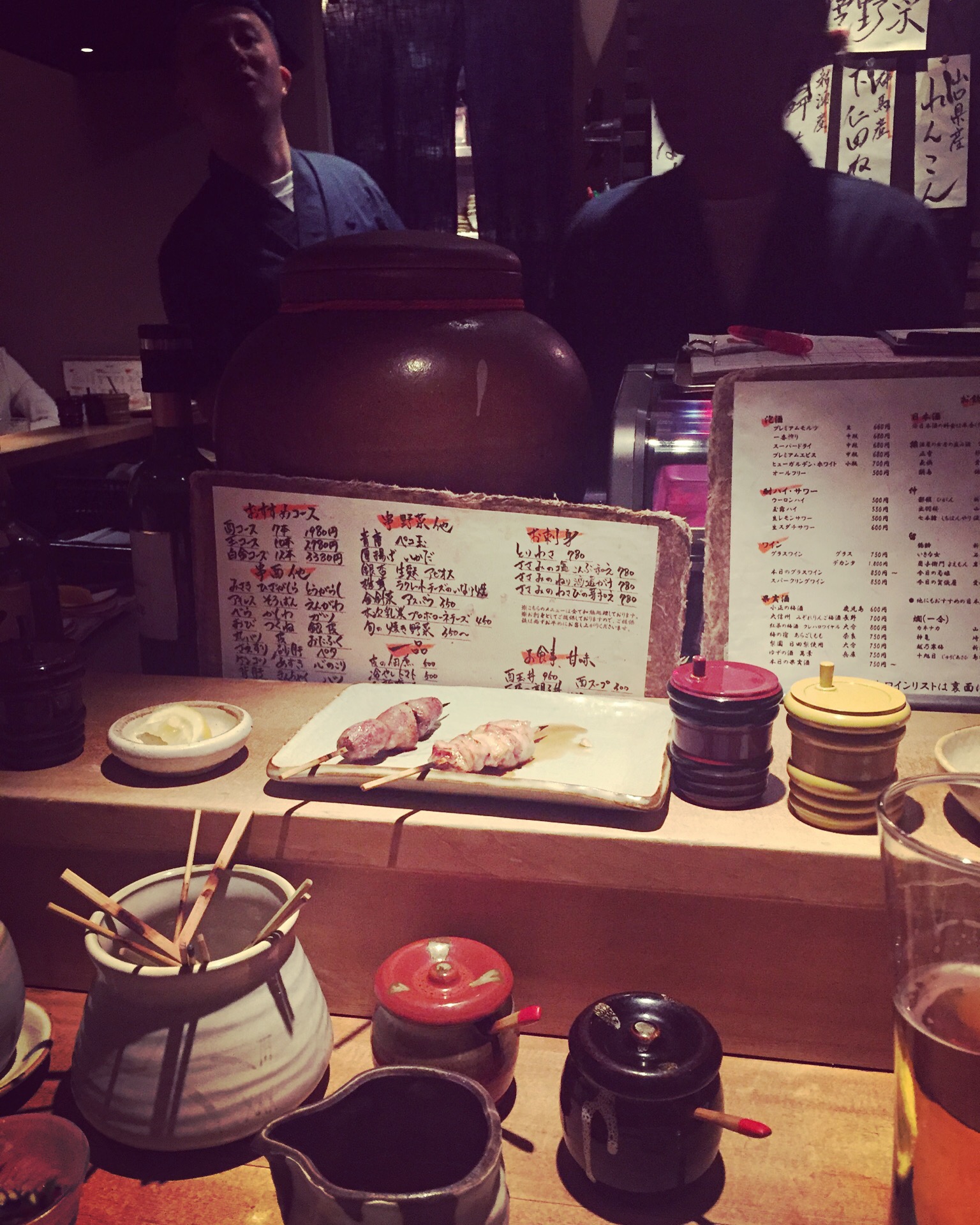
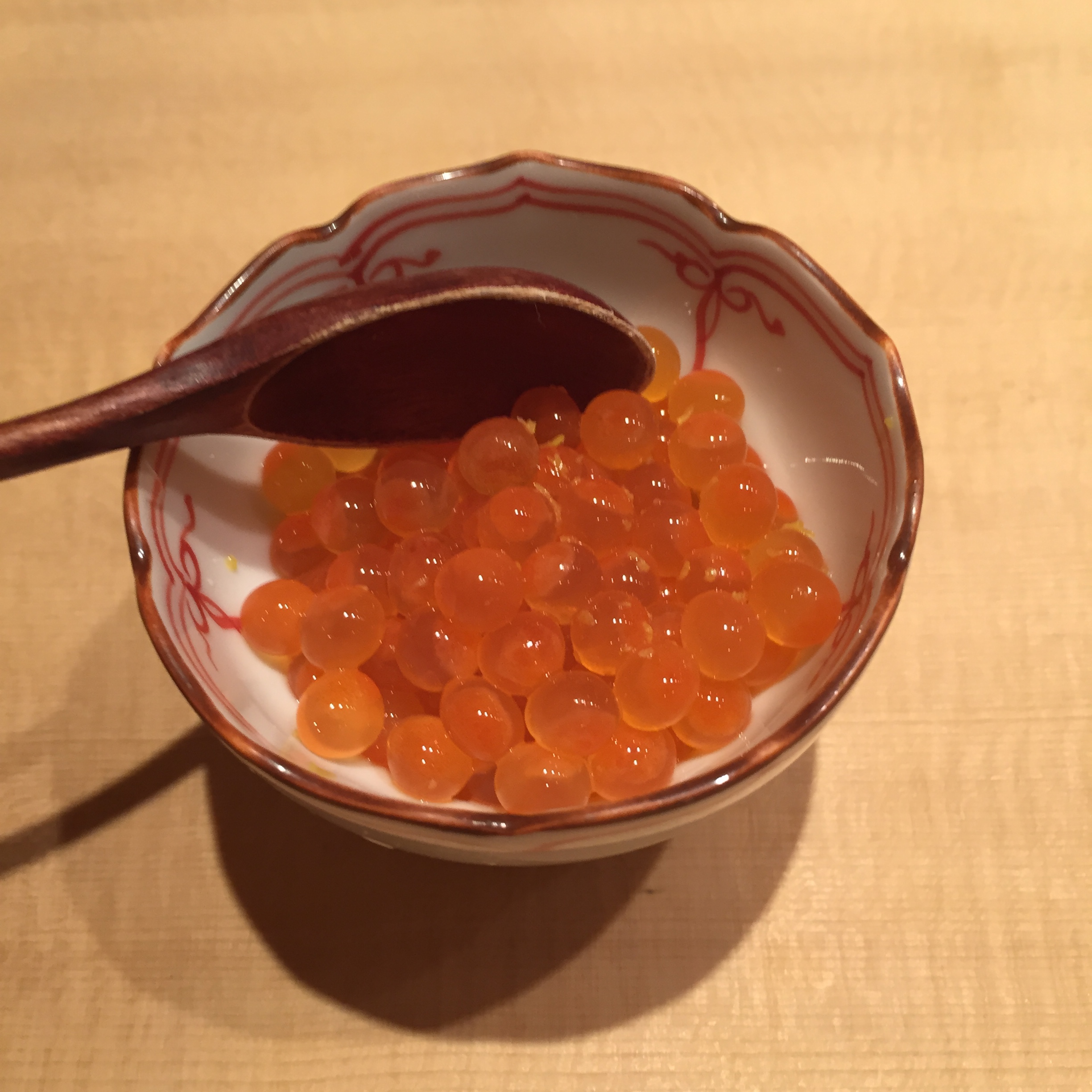
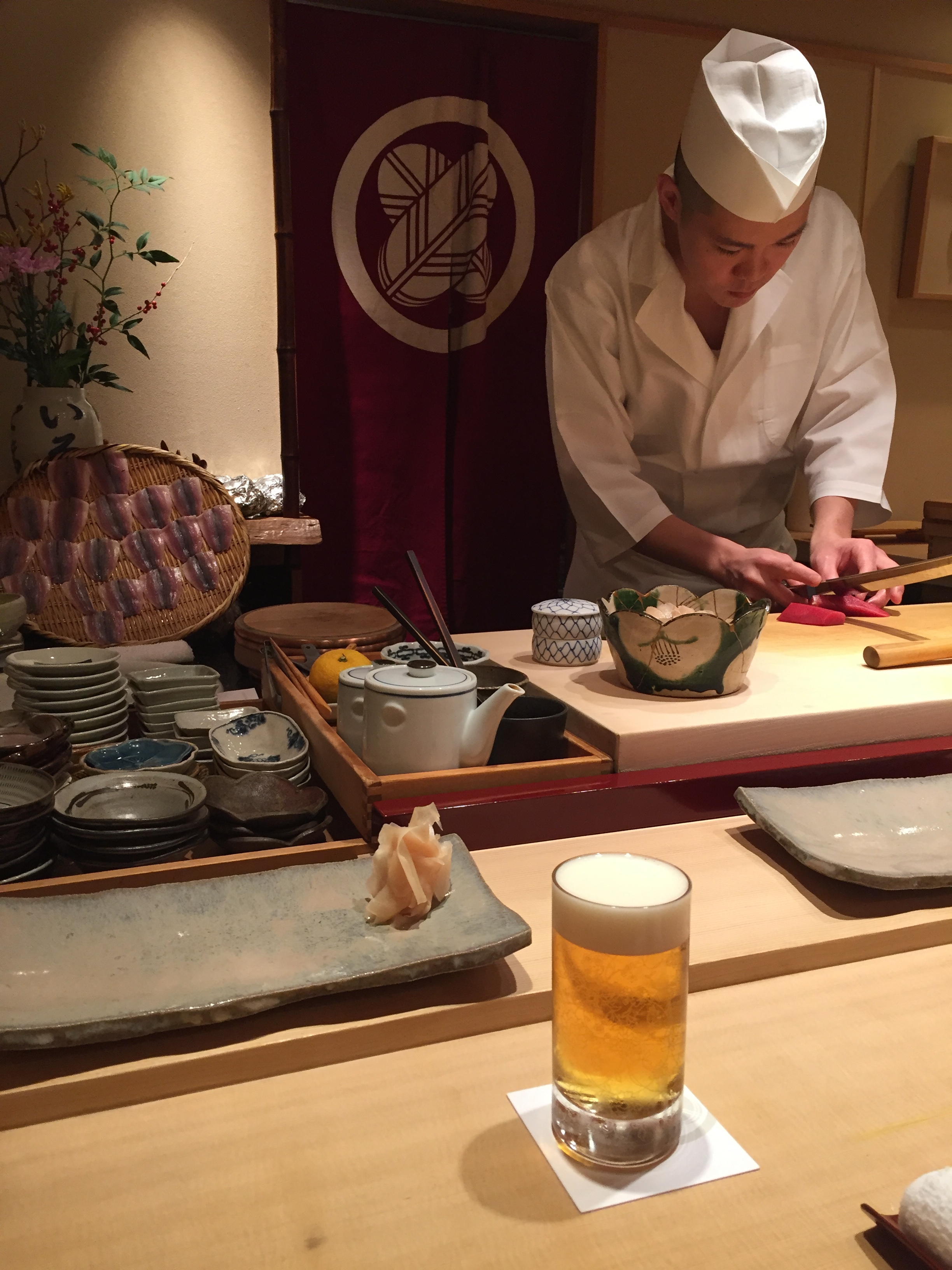
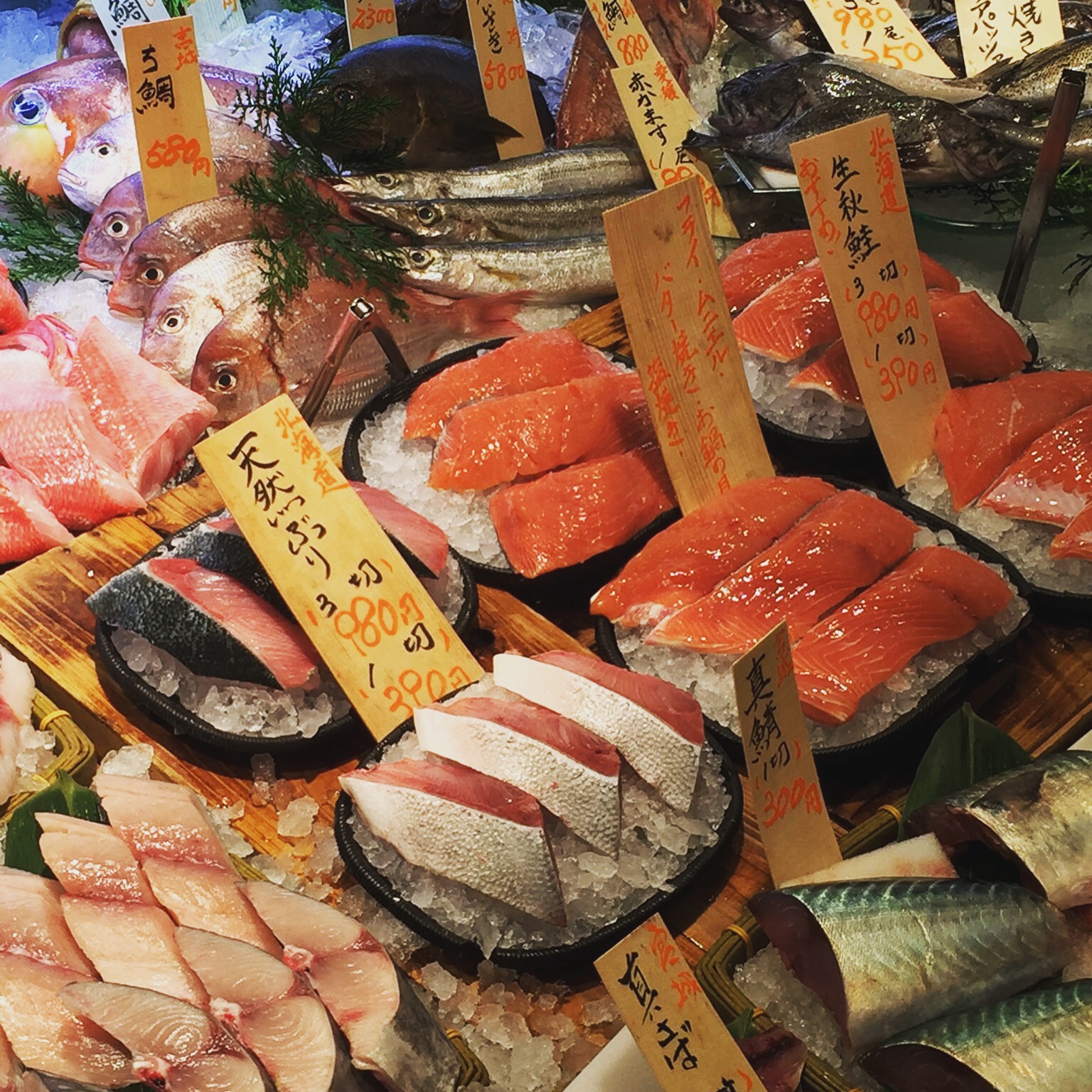
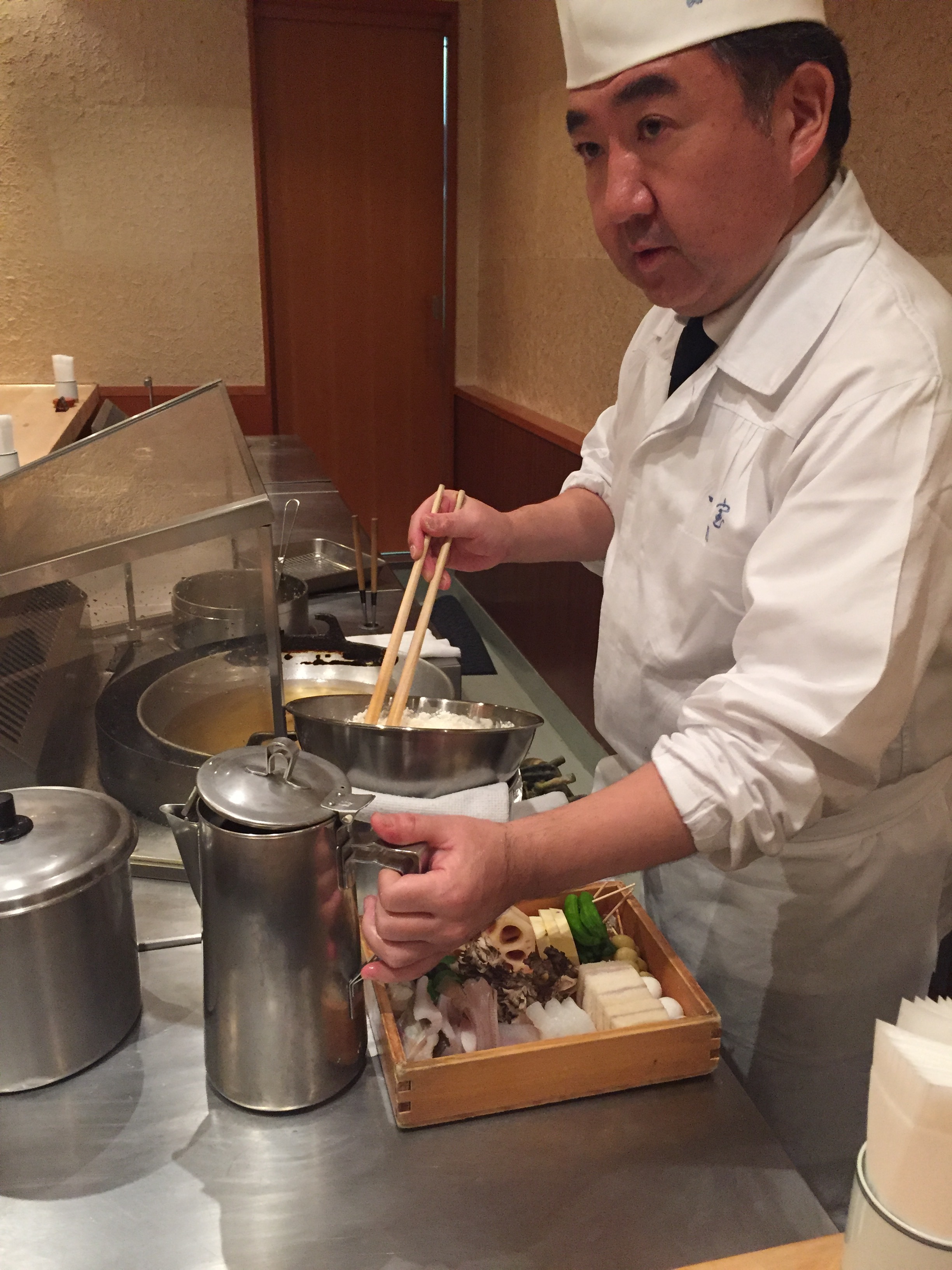
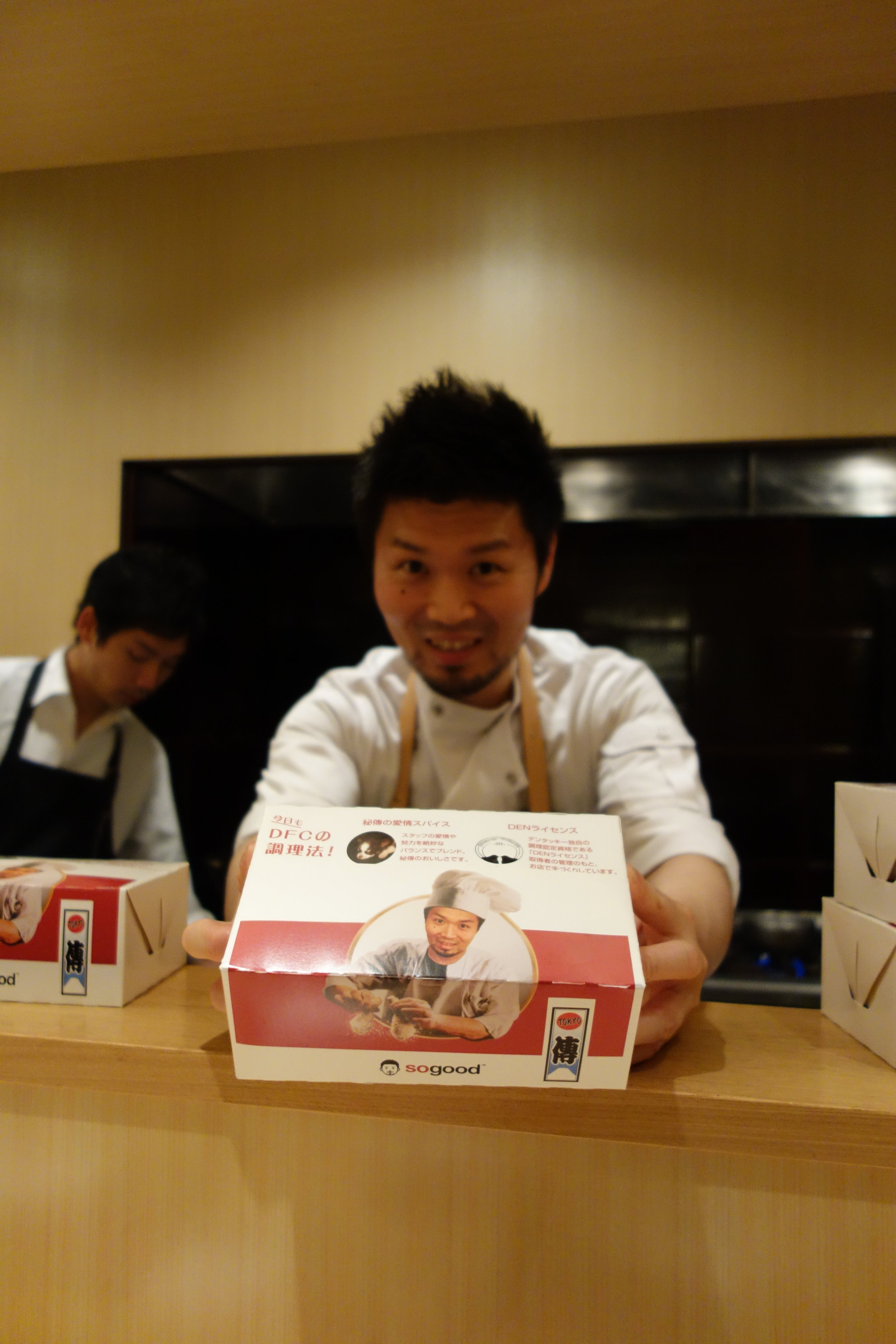

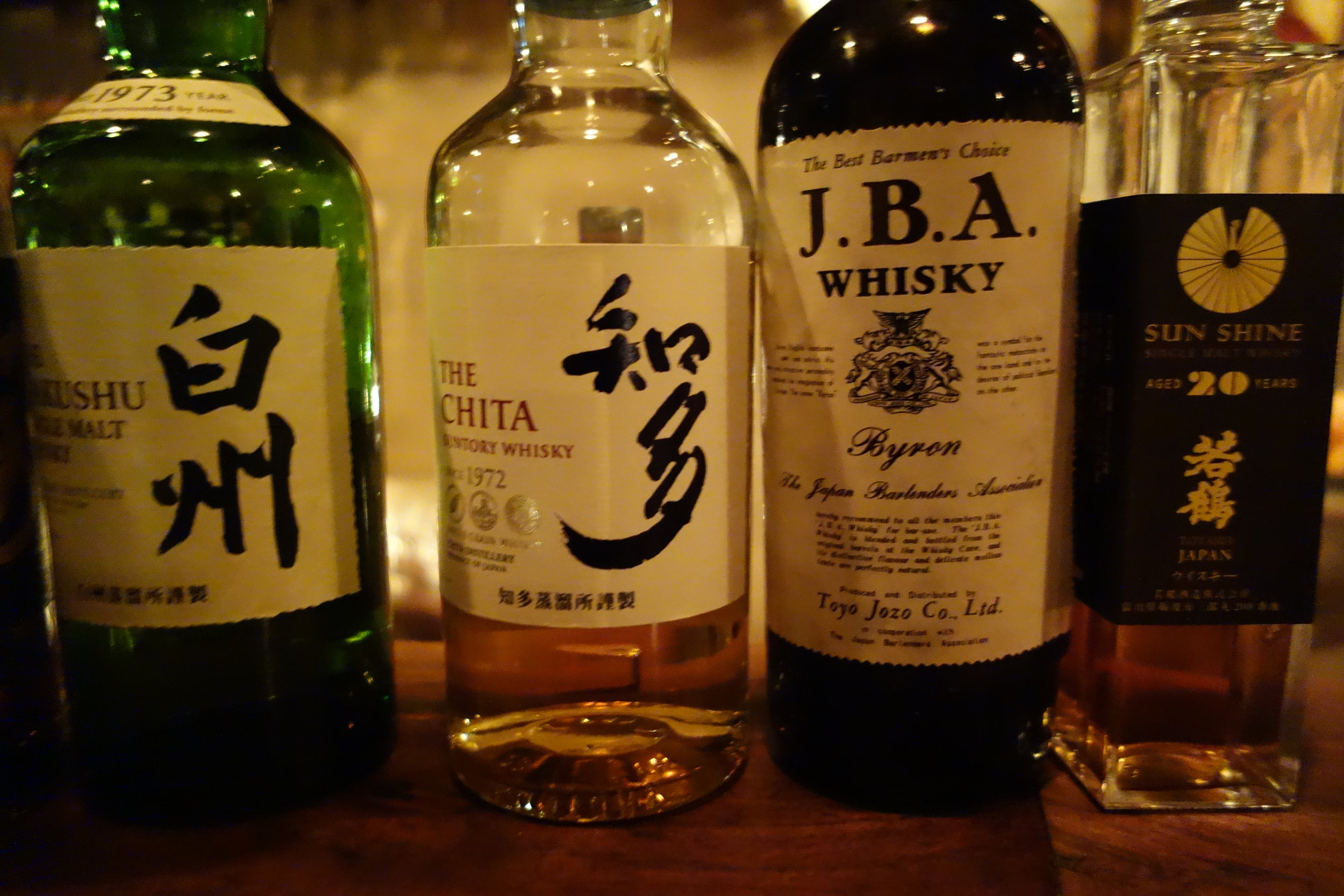
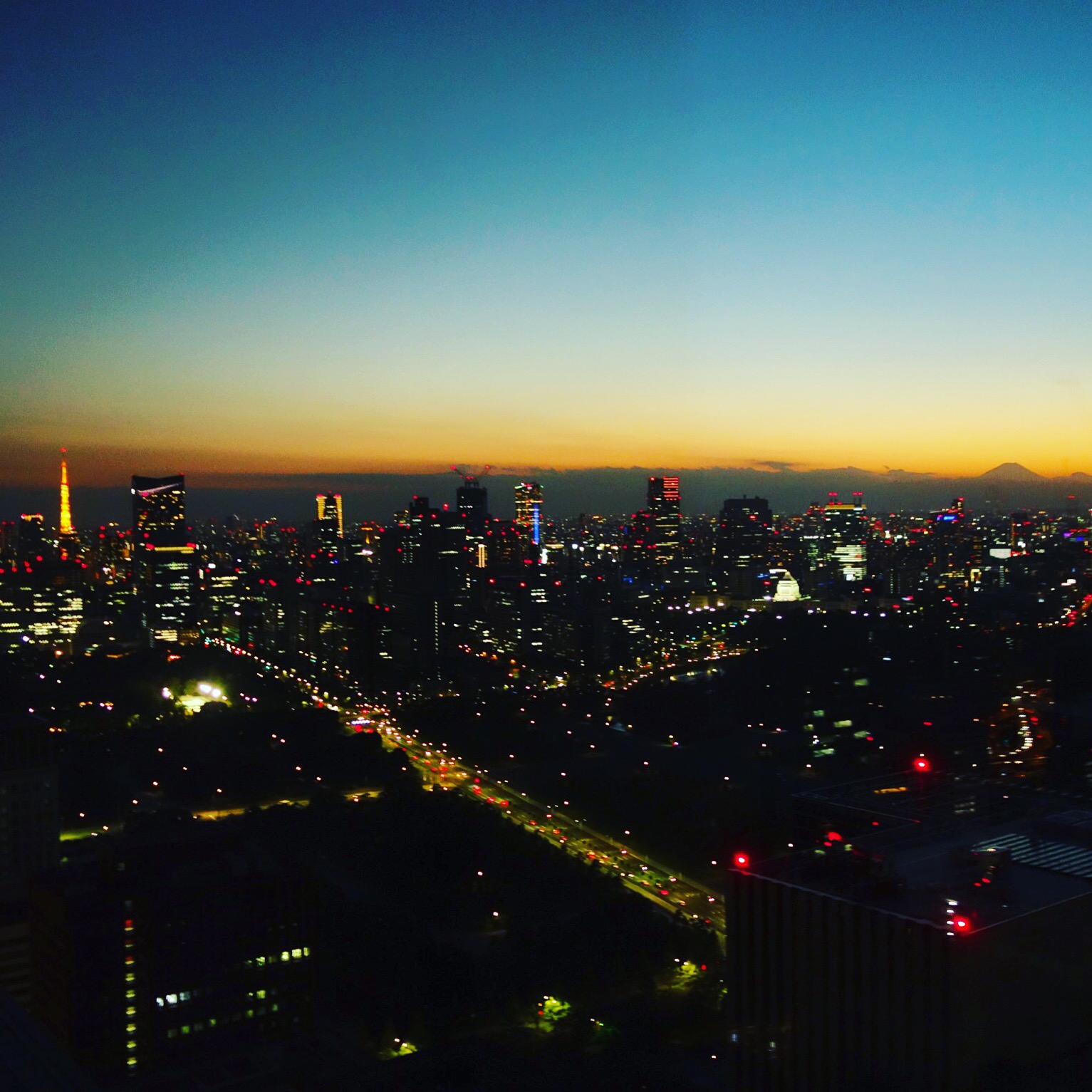
IF YOU WANT TO SEE WHAT A FIFTH-GENERATION TEMPURA MASTER CAN DO
with a pot of bubbling safflower oil, a pair of chopsticks, and his own sleight of hand, book yourself a front-row seat at Ippoh, a Tokyo landmark since 1960. I’ve been coming here for a decade, and the show never gets old. Tonight I’ve brought along two friends. From across the counter we watch, rapt, as chef/magician Masaru Seki transforms everyday ingredients—shishitos, prawns, an egg yolk—into deep-fried nuggets of gold.
You can learn a lot from a bar seat. Like how the chef scores the squid with crosshatching to tenderize it. Or how attuned he is to the oil’s crackle and pop, as he swirls his silver chopsticks in the batter and oil. And though Masaru-san seldom speaks, there’s a silent conversation underway. While we watch him, he’s watching us: gauging our hunger level, how quickly we devour the lotus root, how our eyes light up at the crunch of the maitake.
Forty-five minutes in comes the wild finale. Into the pot goes a grilled cheese sandwich on fluffy white bread. Seconds later, out comes a crackling wedge of umami, sweet and creamy and impossibly weightless. It’s so good we laugh out loud. By this point we wouldn’t be surprised if he dropped in a carrot and pulled out a rabbit.
It was only after ten days of eating my way through Tokyo that I realized I hadn’t once sat at a proper table. Instead, I was invariably balanced on a bar seat or stool, being served something delicious across a countertop. The settings varied—from rowdy yakitori joints to hushed Michelin three-stars—but the setup was always the same. And that setup informs and enhances every aspect of eating in Tokyo.
The Japanese may no longer own counter dining, but they embraced it long before the rest of us, and they’ve inarguably perfected the form. The counter/open-kitchen arrangement—often known as kappo-style dining—emerged in 19th-century Osaka, originally at casual everyday spots. By the end of the twentieth century it had spread across Japan and into more refined restaurants (not least sushi bars, which helped globalize the format).
Today, kappo is above all pragmatic: Here in the land of capsule hotels and minivan-size apartments, few restaurants have the square footage for tables and chairs and a separate kitchen. But the format endures by choice as well as necessity. Even larger restaurants typically put the cooks up front and in view, behind a bar. Counter dining is simply the preferred mode of eating here, and its popularity underscores some key distinctions. First, dining solo carries none of the stigma that it does in the U.S.; walk into any Tokyo restaurant and half the clientele will likely be eating alone. Counter seating is ideal for parties of one or two—though (perhaps thankfully) not so much for groups. Second, in Japan, cooking is about the process as much as the product. For the chef, it’s a performance deserving a proper stage, with all eyes on him. (Even now it’s almost always men behind the counter.) For the customer, watching a chef work is central to enjoying the meal—and even high-end places have little in the way of decor to distract from the main event.
Nor is that show purely visual. “There are meals that are meant to be listened to, not just seen, smelled, and tasted,” says Yukari Sakamoto, a Tokyo-based chef and food writer. “The rhythmic beat of a knife julienning cabbage at a tonkatsu restaurant. The telltale sizzle of oil at a tempura shop. At a counter, those sounds heighten your experience.”
Think of how removed you are from all this in a Western-style restaurant, where the menu and the servers—all words and abstractions—are your only conduits to an invisible kitchen. Counter dining flips that premise inside out, so your interaction is mainly with the cooks, straight from their welcoming shout of “Irasshaimase!”
In Japan, this interaction really is a dialogue, even if neither of you speaks the same language. You may notice a sushi chef glancing your way as he prepares your nigiri, sizing up your mouth and shaping the rice into a perfect bite. “Omotenashi—hospitality characterized by attention to the smallest details—is something you’ll find at all levels of dining out in Japan,” says Sakamoto. “A chef is constantly observing his guests across the counter, adjusting every element of the meal to them.”
For Zaiyu Hasegawa, the chef-owner of Jimbocho Den—whose eight-seat counter is my absolute favorite spot to eat in Tokyo—cooking directly for guests is a way to stay engaged and inspired. “I used to work in a restaurant where the kitchen was closed off,” he recalls. “I felt trapped. I’d ask servers: ‘Did the customers smile? What did they eat first?’” Frustrated, he began peeking through a curtain to spy on his diners. “How else would I know if they liked it?”
At a counter, the relationship between chef and guest is a far more revealing exchange. Dining as theater? This is dining as backstage pass. You get a front-row view of the show and a tantalizing glimpse behind the scenes—the blowtorch caramelizing your foie gras; the planter overflowing with shiso; a giant octopus, splayed on a butcher block, sliced inches from your plate; and, not least, the unguarded moments that transpire when a chef is deep in his craft. In a culture known for its polish and perfectionism, where the “real” thing often seems hidden behind a scrim, there’s a refreshing, almost disarming intimacy to all of this, which feels at once out-of-character and somehow quintessentially Japanese. •
COUNTER INTELLIGENCE
10 favorite Tokyo spots for countertop dining and drinking
SUSHI: Sushi-Ya
Hidden down an alley off an alley that you’ll never find again, Sushi-ya (literally “sushi shop”) looks like your typical Ginza sushi den: a tiny boxlike room clad in blond wood, with an eight-seat, L-shaped counter at the center. The difference is, this one’s run by 28-year-old Takao Ishiyama, a six-foot-tall, baby-faced genius whose technique is as mesmerizing as his food. Watch him as he works: blade gliding over the fish, like water in a brook; fingers pinching rice like a potter molding clay; arms curling and twisting like a knuckleball pitcher. (Ishiyama has a windup as elaborate as Hideo Nomo’s). Every movement is precise, his focus absolute. And the fish—good God, the fish. Otoro tuna as luscious and fatty as a slab of pancetta. Creamy squid dressed with sea salt and sudachi (a super-sour citrus). Bonito gently smoked over straw. Hokkaido ikura perked up with yuzu zest. (The salmon roe is marinated in shoyu for only six hours, so it retains its delicate texture, and bursts like teardrops on the tongue.) All this is why, in just two years, chef Ishiyama has quietly joined the top ranks of Tokyo sushi artisans.
Notes: Plan ahead—the eight seats book up a month in advance. Takao-san’s multi-course omakase menu takes about an hour.
RAMEN: Kikanbo
Rene Redzepi’s go-to spot for spicy ramen lies just north of Kanda Station—you can’t miss the line out front, at least a dozen hipsters deep all day. Inside, the kitchen is obscured by steam clouds, rising from a cauldron of scalding broth and tumbling over the counter, where 15 lucky souls sit elbow-to-elbow, slurping lustily and dabbing their brows. Like you, they’ve ordered the oni (“demon”) ramen: a fiery miso broth spiked with chiles and tingly Sichuan peppercorns, served with or without an egg, and best knocked back with a cold Asahi beer.
Notes: Come mid-afternoon, between peak times, to minimize the wait. The line can take 30 to 40 minutes, the meal lasts maybe 10. (You place your order using a vending-machine-like contraption that spits out a ramen ticket.)
TEMPURA: Ippoh
Masaru Seki of Ippoh comes from an esteemed line of master tempura chefs; this elegant restaurant in Ginza (a quiet, multi-room space above a Barneys New York) is a branch of the 166-year-old Osaka original where his father and grandfather worked. You never dreamed tempura could be this light, or this tasty.
Notes: Book an early seat, before seven on a weeknight, and you have a shot at being the only guest at Masaru-san’s counter. (He speaks enough English to walk you through the ingredients.)
YAKITORI: Toritama
Tucked under a French bistro in the posh Kagurazaka district—a.k.a. Little Paris—this rowdy yakitori makes the most of every part of the chicken: 37 preparations in all, from succulent chicken-oysters to miso-marinated thighs, chewy-crunchy hearts to creamy thymus glands (no, really, they’re amazing). It’s a circus at all hours, and you can watch it unfold from the U-shaped counter, as the resident fire-jugglers toss skewers across the searing hot grill bare-handed, unfazed by flames and smoke.
Notes: Shop Kagurazaka’s boutiques in the afternoon, then hit Toritama in the early evening to nab a seat.
MODERN JAPANESE: Jimbocho Den
Tokyo’s most joyful high-end restaurant is overseen by 38-year-old Zaiyu Hasegawa (whom Brazilian star chef Alex Atala hails as Japan’s greatest young talent). What sets Hasegawa apart is not just his rigor behind the stoves, but his rigorous devotion to laughter—a rarity in Michelin-starred kitchens. To sit at Den’s eight-seat counter is to dive headlong into a 10-course improv comedy show, as the chef and his crew trot out surprise after kooky surprise. There’s the grinning bobblehead of Zaiyu-san himself, who perches on the counter and watches while you eat. There are the carrots carved into smiley faces, hiding in a salad of bracing garden greens. There’s the goofy homage to KFC (delivered in a box marked “Den-tucky Fried Chicken”): inside, what looks like a normal fried chicken wing is stuffed with a mix of sticky rice, potatoes, mushrooms, and chopped ume plum.
Notes: Make a night of it—dinner unfolds over several hours. As ever, you’ll need to call up to two months in advance to reserve.
IZAKAYA: Kotaro
This next-gen izakaya is a well-kept secret of Tokyo’s chefs and food writers, as well as the neighboring beau monde of Shibuya. (One evening an elegant woman in a Bottega Veneta dress dashed in for a shot of sake and some takeout rice.) They come to chef Kotaro Hayashi’s counter for refined, seasonal renditions of hearty Japanese pub food, including Nakamura-style tofu topped with sauteed leeks and fried baby sardines; silky-smoky seared aji (horse mackerel) sashimi; and melt-in-your-mouth shirako (cod milt). On cooler nights he might send out a gooey Savoyard tartiflette with crispy lardons. Hayashi is passionate about sake; working with just nine small-scale jizake breweries, he’s able to score rare seasonal allocations. Put yourself in Korato-san’s hands for both sake and food. While he and his staff speak only minimal English (and the menu’s in Japanese), the ever-smiling chef will happily guide you through the meal.
Notes: Put yourself in Kotaro-san’s hands. He and his staff speak minimal English, but he’ll happily guide you through the meal. (A translation app helps.)
GRILL: Jomon Roppongi
Even livelier than Toritama—and a whole lot smokier—Jomon is a late-night yakitori and grill-house in the trendy Roppongi district, which means it’s inevitably packed with 20- and 30-something Japanese couples and groups, most of them here to drink, and drink hard. Upside? The food is sensational, and worth braving the raucous scene. Fortunately, the party crowd mostly adjourns to low tables in back. Better to sit at the bar with a view of the grill, from which come all manner of treats: molten beef short ribs, minerally chicken livers, flame-kissed persimmons wrapped in bacon. A breeze sails in through the open windows, swinging the Edison bulbs and swirling the smoke, while Dixieland warbles from the stereo. By now you scarcely notice the kids.
Notes: Like many spots in Roppongi, Jomon is open late. It’s ideal for a jet-lagged midnight meal, pre- or post-bar crawl. Warning: Your clothes will end up smelling smoky.
COCKTAILS: Bar Ben Fiddich
There are thousands—no exaggeration—of obsessively curated cocktail bars in Tokyo, and I’d wager at least half are worthy of a drink or five. But none are quite like Ben Fiddich, which floats above glitzy Shinjuku on the ninth floor of a nondescript office tower. Step inside, let your eyes adjust to the candlelight, and you’ll see this is no pretentious, hush-hush speakeasy, but a quietly convivial bar that happens to serve phenomenal cocktails. Proprietor Hiroyasu Kayama, in his ivory dinner jacket, will suggest one of the bar’s rare Japanese whiskys (you’ll want the Ichiro). But you really need to order a Negroni, if only to watch Kayama hand-craft his own Campari. Using a mortar and pestle, several mysterious tinctures, and a few dozen botanicals, he’ll blend the aperitivo right before your eyes. The result puts any storebought version to shame.
Notes: Like most of Tokyo’s top cocktail dens, this one is tricky to find (thank God for Google Maps). You don’t need to reserve, but have your hotel call ahead.
MUSIC: Bar Martha
Now multiplying like mad across Tokyo, the “record bar” is one of Japan’s great 21st-century trends, albeit a very last-century concept. Like the basement rec room of your mildly alcoholic music-nerd friend, record bars are all about vintage vinyl, stiff drinks, and the appreciation thereof (and honestly, you should just move along if you don’t own a turntable). I’d call them speakeasies, but speaking is decidedly frowned on: You’re here to shut up, listen, and drink. Bar Martha, in Ebisu, is among the more polished offerings, with superb cocktails (in gorgeous glassware) and a huge collection of obscure soul, funk, and jazz, played through a tube amp and tweed-covered speakers, each the size of a fridge.
Notes: They’re dead serious about forbidding loud conversation, and there’s a strict no-photos policy; you’ll have to be sneaky about Instagramming that handblown coupe. (Or head to Kaminarimon and buy one at Sokichi, every Tokyo bartender’s go-to shop.)
COFFEE: Café de l’Ambre
As dozens of upstarts lay claim to Tokyo’s artisanal-coffee throne, this smoke-stained, sepia-toned relic in Ginza—founded in 1948—still trumps them all. Owner Ichiro Sekiguchi just turned 101; he was pour-over before pour-over was cool. Each filter-brewed cup is meticulously, almost comically over-prepared, as the shop’s antique wall clock slows to a crawl. L’Ambre even offers a selection of aged beans—a 1954 Colombian, a ‘93 Guatemalan. But the real draw, for my yen, is the incredible iced coffee, chilled in a cocktail shaker and served in a dainty coupe.
Notes: There are a few wobbly tables, but you’ll want to sit at the counter to watch your barista at work.
